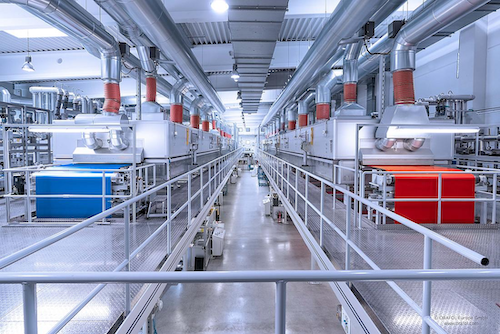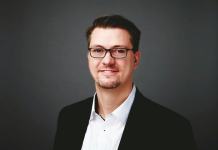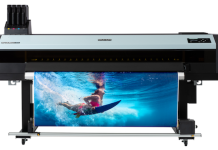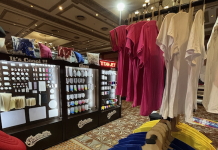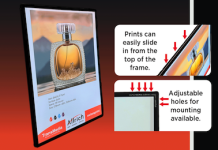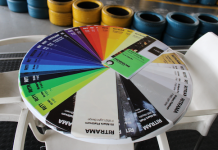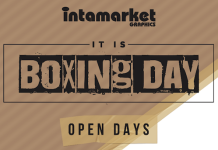ORAFOL is celebrating its 35th anniversary, the 30th anniversary of the first foundation stone being laid at its headquarters and the 20th anniversary of its American headquarters in Black Creek, which was built in 2005. The path from a German Democratic Republic (GDR) company to a global player was rarely smooth, but was always characterised by courage, technology and a clear vision for the future.
‘These milestones are cause for celebration and the associated success of ORAFOL is a source of confidence,’ said Dr. Holger Loclair, Chairman and CEO of ORAFOL Group.
ORAFOL’s roots go back to 1808, when Richard Wibelitz laid the foundations for the manufacture of chemical products in Oranienburg over 200 years ago as the exclusive manufacturer of postmark inks for the Kingdom of Prussia.
Over the course of a century, the Wibelitz-Farbenwerkstatt in Berlin developed into a renowned manufacturer of paints and varnishes. A groundbreaking step followed in 1919: the Berlin site was abandoned and the company moved to Oranienburg in Brandenburg.
Nationalisation Of Companies In The GDR
Farbenwerkstatt Wibelitz was partially nationalised in 1957 and changed its name to Hannalin KG. In 1972, almost all companies in the GDR that were still fully or partially privately run were nationalised. Hannalin KG therefore became a 100% state-owned company with the name VEB Spezialfarben Oranienburg.
Despite these adverse circumstances, the company has always focused on excellent natural science, which can also be seen in the historical milestones of product development: In the 1960s, Hannalin KG developed the first self-adhesive reflective films for traffic signs under the brand name MIKROLUX. In 1976, VEB Spezialfarben produced the first self-adhesive coloured films. In 1986, a team led by the then technical director, Dr. Loclair, developed a new type of shrinkable, heat-activated film for aircraft modelling.
After studying chemistry at the Bergakademie in Freiberg, Dr. Loclair started working in research and development at VEB Spezialfarben in Oranienburg in 1977. Over the next ten years, he ambitiously helped to design and develop the products, their manufacture and their distribution. A large proportion of these products were exported to the West. In 1987, he was given responsibility for the management of the plant.
Dr. Loclair reached the decisive milestone for ORAFOL with German reunification: in the turbulent times of upheaval, he fought resolutely for the continued existence of the company. Even before the dissolution of the combine to which VEB Spezialfarben belonged, Dr. Loclair did everything in his power to preserve the knowledge and the site in Oranienburg’s Krebststraße.
His assertiveness paid off when he finally secured a bridging loan of two million D-marks from the GDR Foreign Trade Bank, despite frozen financial reserves, which saved the company from going out of business for the time being.
The time to take the company into private hands was pressing. As citizens of the GDR could neither have the private means for such company takeovers nor could banks grant them loans, an investor had to be found. Dr. Loclair therefore convinced the Bavarian entrepreneur, Claus Schmidbaur, of his products and brought him on board as an investor. This paved the way for ORAFOL to enter the market economy and the small team led by Dr. Loclair optimistically and boldly launched ORAFOL Klebetechnik GmbH in 1990.
Dr. Loclair had already purchased a coating machine from a mechanical engineering company in Hamburg in 1988 to expand production. This played a decisive role in ensuring that production continued smoothly in those days and was able to develop so successfully after German reunification.
Thanks in part to the partnership with the machine manufacturer, ORAFOL was always able to respond quickly to the constantly changing market conditions and grow successfully in terms of technology. This successful co-operation continues to this day and is the basis for ORAFOL’s ‘German Engineering’, which it has now also established at its subsidiaries worldwide.
Dr. Loclair still pursues a clear philosophy today and he emphasised: ‘Independence is one of the most important things for me because it opens up opportunities that you wouldn’t otherwise have.’
This and technology-driven innovation will continue to be the driving forces behind ORAFOL’s development in the future.
ORAFOL SOUTH AFRICA
+27 10 026 3532
orafol.sa@orafol.co.za
www.orafol.com


